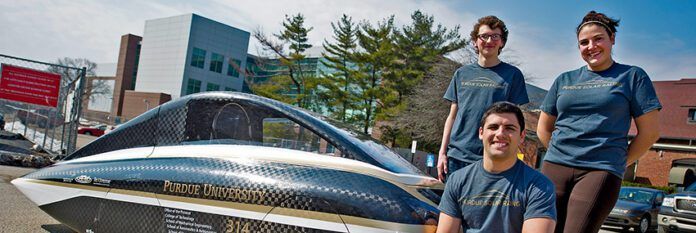Purdue University Airport (KLAF) announced on Monday (March 20) it is teaming with Saab and Information and Communication Technology (ICT) provider Ericsson on a private 5G network. According to Purdue, airport sensors and systems typically need hardwired network connections sometimes requiring digging trenches for copper lines or fiber-optic cables.
Alternatives include radio-frequency links, which can be unreliable, or public cellular connections, which come with subscription fees and “consumer-oriented performance limitations.” According to Purdue, the new technology of the planned project will make previous connectivity obsolete. “5G innovation has promised to provide a new generation of capabilities for enterprises. This project aims to bring to life the benefits of private 5G for airports, where new high-performance networks can be tested in real-life scenarios.”
The partners call the 5G network project a “lab to life” enabling academics, researchers and business entities “to develop commercial solutions that can be replicated to improve operations and security at airports of all sizes.”
Specifically, Ericsson will contribute the private 5G network for the Purdue Research Foundation to operate at KLAF, Purdue University’s public-use airport, which conducts more than 125,000 aircraft operations per year. Saab will install its Aerobahn platform, which includes the SAFE Event Management security network used in airport operation centers.




































Purdue’s biggest projects have been tying to find a way to make cattle fly, and finding new ways to lose to Indiana University in basketball.
More successful in the second project to be sure… 🙂
Doug Brooks, IU ’84
The local arts and crafts college (IU), might have a better basketball history, but basketball is only for entertainment and revenue generation.
Purdue has been doing great things in engineering and the other sciences for decades. Ask any one around the world about IU (or Harvard, Princeton or Yale) and its “who, what?” Say Purdue and the response is always oh yeah, Purdue, a great world class university.
How many astronauts came from IU? ZERO. From Purdue, 25. First and last men on the moon are Purdue alumni. Armstrong and Cernan.
Rik Carlson PU ’72, ’73, ’75.
“Alternatives include radio-frequency links, which can be unreliable” …. then goes on to say how 5G is better. 5G *is* a radio frequency link.
Ahhh, aren’t some airplane radio altimeter systems having problems with a certain bandwidth or 5G? Making autoland approaches N/A.
Hello? Anyone home at Perdue and the FAA?
Purdue
Purdue only has a Cat I ILS system. No auto land available at KLAF.
Cat I limitations are 1/2 mile visibility and 200 foot ceiling. Auto land; Cat III A, B and C. RVR values vary depending which transmissometer values apply, possible local obstructions and balanced field length requirements. Autoland requires special autopilot and auto throttle equipment along with higher maintenance and testing requirements; immersed crew training along with special check ride. They also require special equipment on the ground for the approach, much more accurate and maintained.
Cat II requires the use of the auto pilot to the missed approach point with a disconnect and manual landing. Cat II minimums are normally 1/4 mile visibility and 100 foot ceiling. Variable depending on individual airport circumstances.
Commercial with ATP, 9 type ratings, 30,000 hours +/-, FE on the 707 and L-1011, A & P mechanic.